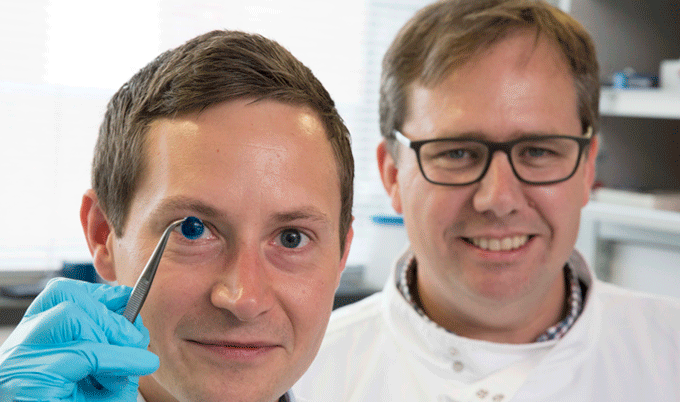First 3D-printed human cornea
Scientists at Newcastle University in the UK have 3D-printed the first human corneas providing hope of an alternative to the limited supply of donated corneas, especially in poorer parts of the world.
The proof-of-concept research, published in Experimental Eye Research, mixed human corneal stromal cells, from a healthy donor cornea, with alginate and collagen to create a solution, a ‘bio-ink’, that could be printed. Using a simple, low-cost 3D bio-printer, the bio-ink was successfully extruded in concentric circles to form the shape of a human cornea, taking less than 10 minutes to print.
Professor Che Connon, professor of tissue engineering at Newcastle University who led the work, said, “Many teams across the world have been chasing the ideal bio-ink to make this process feasible. Our unique gel - a combination of alginate and collagen - keeps the stem cells alive whilst producing a material which is stiff enough to hold its shape but soft enough to be squeezed out the nozzle of a 3D printer.”
The research builds on Prof Connon’s previous work which kept cells alive for weeks at room temperature in a similar hydrogel. “Now we have a ready-to-use bio-ink containing stem cells, allowing users to start printing tissues without having to worry about growing the cells separately,” he said.
His team also demonstrated they could build a cornea to match a patient’s unique specifications, but Prof Connon said it would be several years before they could be used for transplants.



























